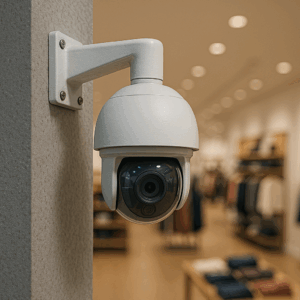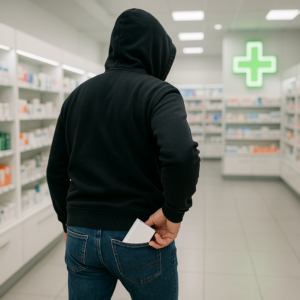Understanding Shrinkage to Better Protect Your Margin 🛒
Shrinkage , and more specifically shoplifting, represents a daily and costly challenge for all retail players, whether it's large food retailers, pharmacies, or DIY stores. This silent phenomenon doesn't just skew your inventories; it directly erodes your profit margins and weighs on the overall profitability of your points of sale. To effectively counter this threat, the first essential step is to accurately identify the products most frequently targeted by thieves.
Understanding these priority targets allows you to deploy an effective and tailored prevention strategy . This article aims to present the top 10 most stolen items, to provide you with the knowledge necessary to better secure your assets, protect your profits, and optimize in-store security management.
High-Value Goods: The Preferred Target of Organized Theft 💎
The most stolen products share characteristics that make them particularly attractive for organized theft : they are generally small in size, have a high market value, and are easy to resell on parallel markets. This combination makes them prime targets for structured networks seeking to maximize their profits. It is therefore essential to pay particular attention to these items to deter attempts.
Among the most coveted products, three main categories are unsurprisingly found:
- Premium alcohols and spirits : Their high value and convenient format make them easy to conceal, making them a lucrative and constant target.
- Branded perfumes and cosmetics : Small, expensive, and in high demand, they easily slip into a bag and their resale value is guaranteed.
- Razor blades and refills : A classic of in-store theft due to their high cost and incessant demand.
Everyday Consumer Products: Opportunity and Necessity Theft 🧀
Beyond luxury items, many everyday products are also highly sought after by thieves. Theft here is often motivated by necessity or a simple opportunity, what is called opportunity theft . Although the individual value of these items is lower, their repeated and high-volume theft ultimately represents a considerable loss for retailers. It is crucial not to underestimate the cumulative impact of these thefts on your inventory and turnover.
This category includes sometimes surprising products whose theft is logically explained:
- Cheese and fresh meat : Representing a costly part of the average basket, they are stolen for both personal consumption and local resale.
- Powdered infant formula : An essential and expensive product, its theft is often linked to financial difficulties and high demand.
- Over-the-counter medications : Painkillers, for example, are easy to hide and meet an immediate need.
Electronics and Tools: High Surveillance Categories ⚡
The DIY and consumer electronics sections are far from spared. They indeed concentrate high-value items, which are not only useful in everyday life but also very easy to monetize on the second-hand market . Surveillance in these areas must therefore be strengthened to prevent losses. To complete our list of the most sensitive items, here are the last products to monitor very closely, whose compact format and high demand make them easy prey for thieves, whether they act on impulse or in an organized manner. The cumulative loss of these items can significantly affect the profitability of a department.
- Batteries and accumulators : Essential and small, they often disappear from shelves unnoticed.
- Power tools : Drills, screwdrivers, and other tools are highly sought after and targeted by specialized thieves.
- Phone accessories : Chargers, cables, and headphones are perfect targets due to their small size and cost.
- Energy drinks : Often stolen on impulse, their recurring disappearance represents a significant loss of earnings.
From Knowledge to Action: Proactive Strategies to Reduce Theft ✅
Having knowledge of this list is a first step, but transforming it into a concrete strategy is what will make the difference for your turnover. A proactive and multi-level approach is key to sustainably securing your stores. Consider reorganizing your shelves to position sensitive items in high-visibility areas. Use traditional security solutions such as electronic anti-theft devices or protective cases. However, to go further, innovative video analysis solutions based on AI can detect suspicious gestures in real time, thus offering discreet but effective protection.
Training your teams remains your best defense . Attentive staff, trained to spot unusual behaviors and offer excellent customer service, have a powerful deterrent effect. By combining these measures, you are not just protecting your profits: you are creating a safer and more pleasant environment for your employees and your loyal customers.





